23 Best Things to Do in New Orleans
Introduction
New Orleans, a vibrant city in southeastern Louisiana, stands at the confluence of rich cultural and historical traditions. A crucial trading port built at the mouth of the Mississippi River, it has evolved into a melting pot of French, Spanish, Creole, and African influences. Known worldwide for its live jazz music, historical landmarks, and world-renowned cuisine, New Orleans offers more than just nightlife and captivating street performances. Whether you’re interested in history, art, nature, or gastronomical adventures, the city has something for everyone. This article will showcase 23 of the best things to do in New Orleans, offering a comprehensive journey through its many attractions.
1. Explore the French Quarter
The French Quarter is the heart and soul of New Orleans and its oldest neighborhood, dating back to 1718 when the city was founded by the French colonists. As the city’s cultural epicenter, the area exudes historic charm with its colorful Creole townhouses with distinctive wrought-iron balconies.
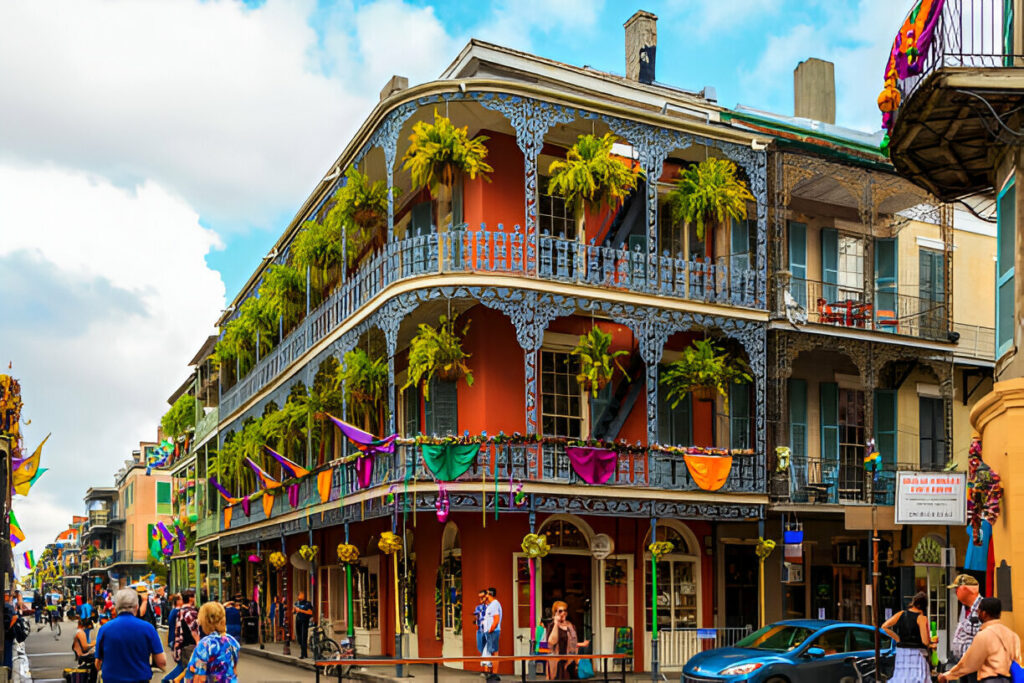
Jackson Square lies at the center, surrounded by iconic landmarks such as the St. Louis Cathedral, America’s longest-standing cathedral in continuous use. Artisans and street performers abound, providing an energetic atmosphere that draws tourists from all over the world. Visit the French Market, one of the oldest public markets in the U.S., where you can shop for local crafts, enjoy enticing street food, or simply revel in the lively ambiance.
Visitor Tip: Arrive early to avoid the crowds and take the time to stroll the narrow streets at a leisurely pace, dipping into art galleries and local cafes as you go.
2. Visit The National WWII Museum

Recognized as one of the world’s premier WWII museums, the National WWII Museum offers an immersive and educational experience that is both heartbreaking and inspiring. The museum covers the global battle, focusing on the participation of the United States in critical turning points like the D-Day invasion. Exhibits feature real military vehicles, fighter planes, and personal accounts of soldiers who took part in the war. One of the most noted features is the cinematic 4D interpretation of Beyond All Boundaries narrated by Tom Hanks, which provides viewers with a dynamic retelling of the events that shaped the war.
Visitor Tip: Consider allocating at least half a day here to explore the various exhibits. Pre-purchase tickets online to avoid wait times and gain access to the 4D experience.
3. Take a Riverboat Cruise on the Mississippi River

No visit to New Orleans is complete without experiencing the iconic Mississippi River via an old-fashioned riverboat. The steamboat cruises, such as Steamboat Natchez and Creole Queen, allow visitors to marvel at picturesque views while enjoying a meal or listening to live jazz. These cruises are not only relaxing and scenic, but they also provide narrated histories of the city’s relationship with the Mississippi, blending tales of early trade and present-day significance.
Visitor Tip: The best time to embark is during sunset, ensuring you capture breathtaking views of the sun dipping behind the New Orleans skyline.
4. Stroll Through City Park
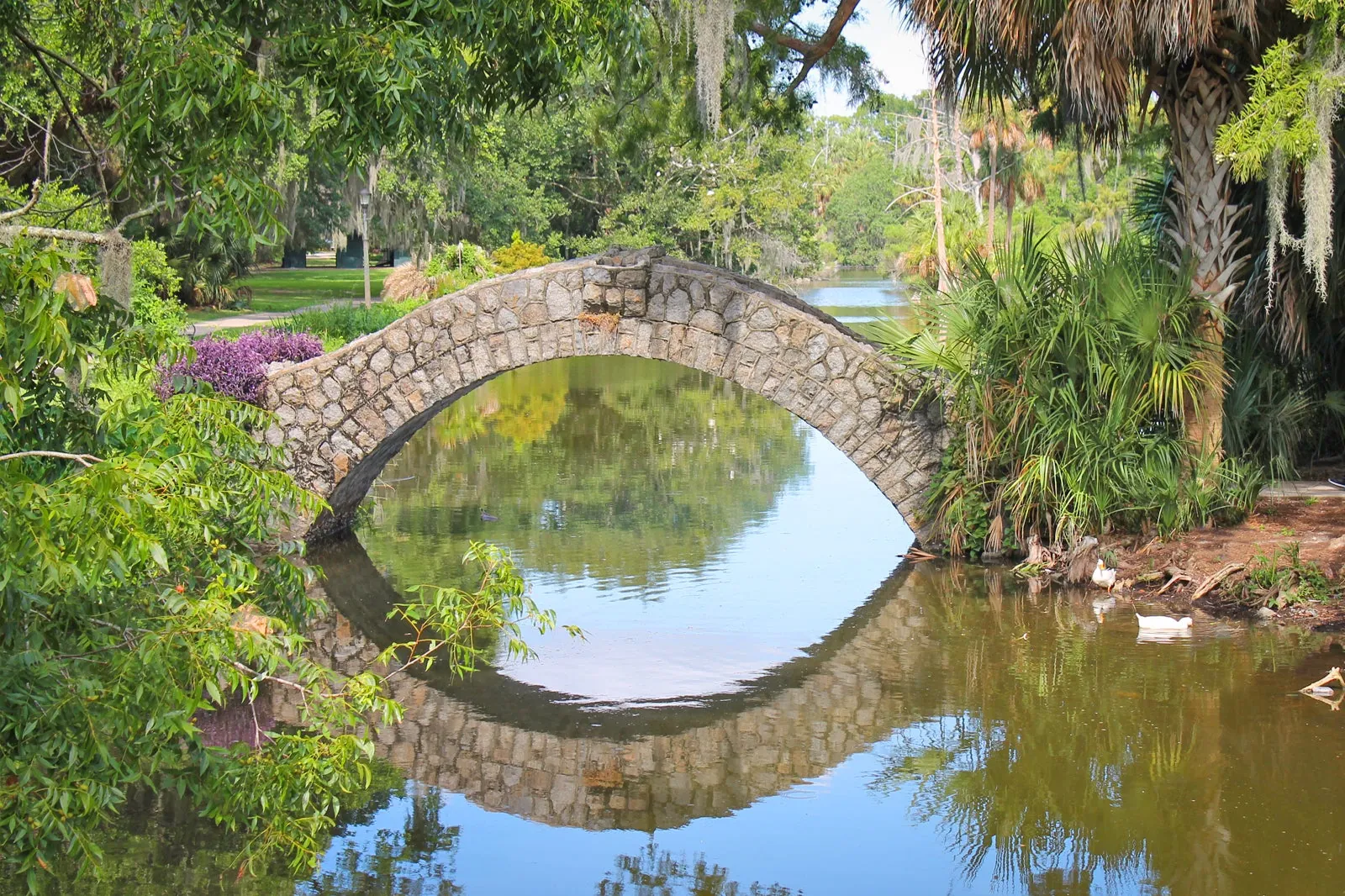
Covering over 1,300 acres, City Park is one of the largest urban parks in the country and offers myriad activities for visitors of all ages. Art aficionados should start by visiting the New Orleans Museum of Art (NOMA) and the adjacent Sydney and Walda Besthoff Sculpture Garden, which features over 90 sculptures set among oak trees and water features. Nature lovers can explore the Botanical Garden or enjoy activities such as paddle boating on Big Lake or biking through oak-shaded trails.
Visitor Tip: City Park is an ideal escape from the urban bustle of New Orleans. If you’re visiting with children, don’t miss Storyland, a fairytale-themed playground located within the park.
5. Discover the Garden District
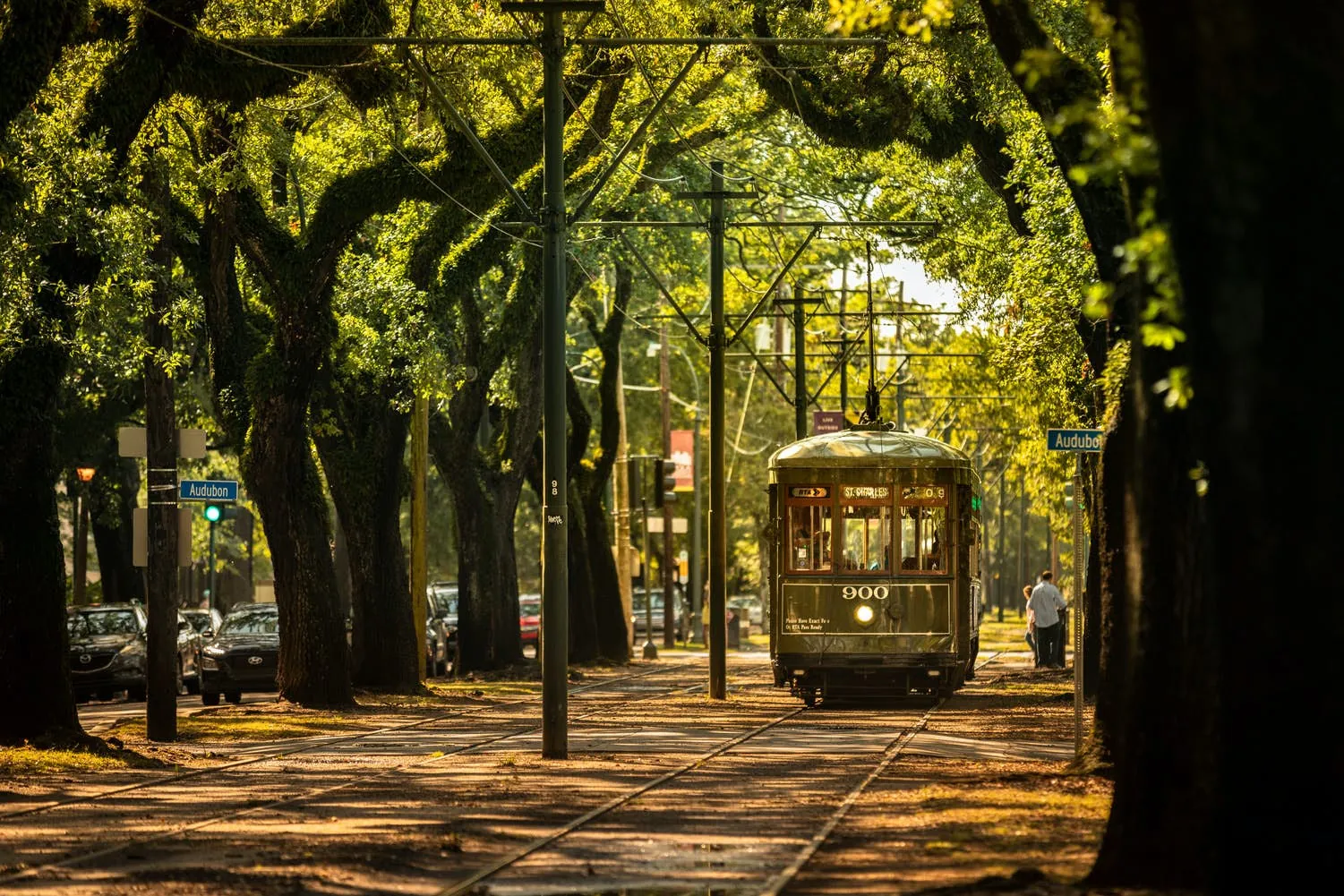
The Garden District, located in uptown New Orleans, is a stunning area with opulent antebellum mansions and wide streets shaded by oak trees. Known for its stunning architecture, the neighborhood provides visitors a glimpse into the grandeur of pre-Civil War New Orleans. Lafayette Cemetery No.1 is also located here, one of New Orleans’ best-known cemeteries, with intricate above-ground tombs that date back to the 1800s. The district is also home to Commander’s Palace, a famous restaurant in service since 1893 and a staple of Creole dining.
Visitor Tip: To fully appreciate the beauty of the Garden District, take a streetcar ride along St. Charles Avenue. The streetcar provides a relaxing way to explore this historic area and its stately mansions.
6. Take a Swamp Tour
Louisiana’s bayous and swamps offer a stark contrast to the city experience and represent a major part of the state’s ecological identity. Taking a swamp tour by airboat or kayak allows visitors to get up-close-and-personal with local wildlife while navigating open marshes and narrow bayous. Tour companies offer journeys through these mysterious wetlands, where you can spot alligators lurking just below the surface, see exotic birds, or learn about the traditional ways of life for the people who inhabit the region.
Visitor Tip: Spring and fall are the ideal seasons for swamp tours, as summer temperatures can rise substantially and absence of mosquitoes during these times make for a more comfortable adventure.
7. Visit Audubon Zoo and Audubon Park
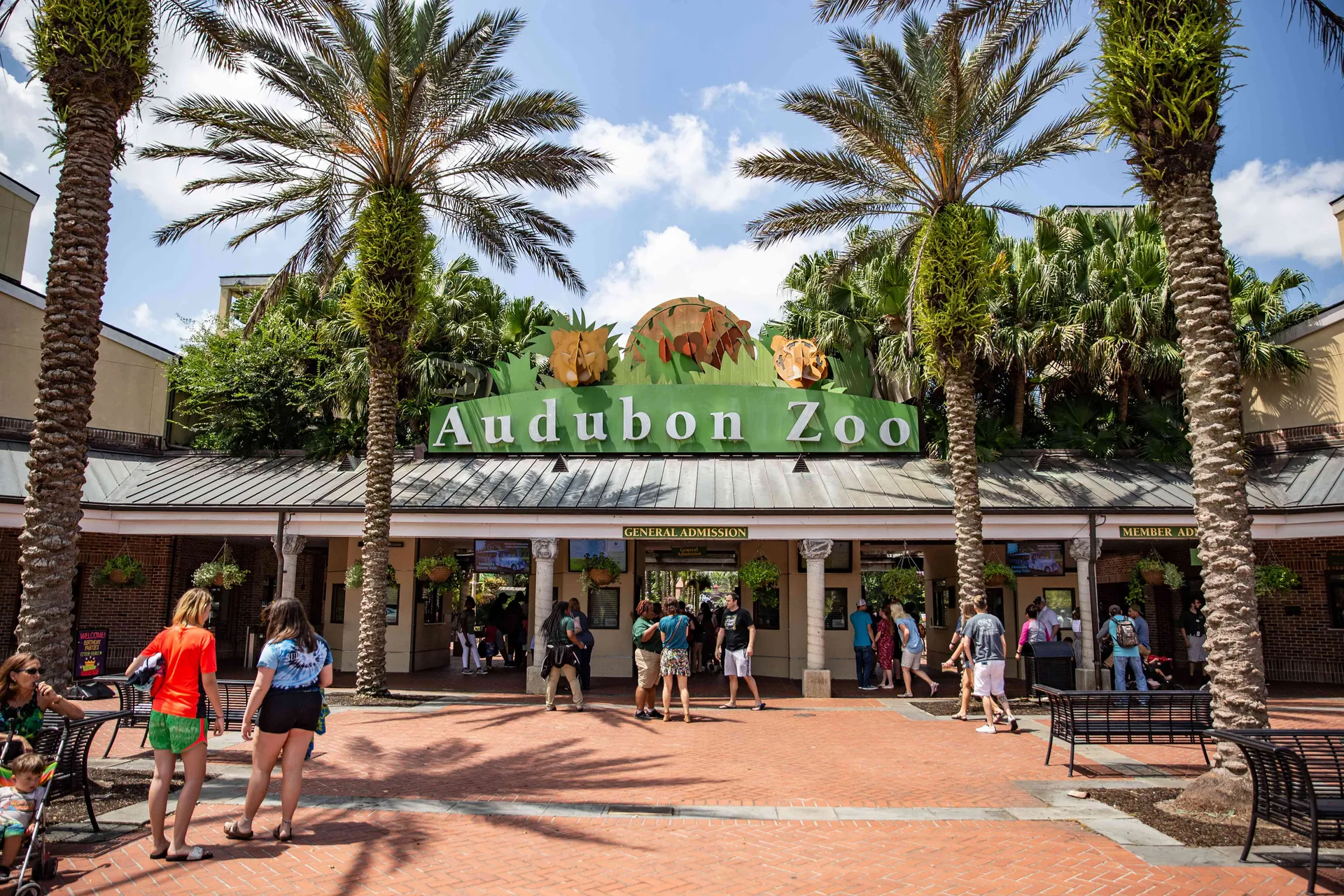
Audubon Zoo and the surrounding Audubon Park are major draws for families visiting the city. The zoo spans over 58 acres and is home to over 2,000 animals, including notable exhibits such as the Louisiana Swamp, African Savanna, and Jaguar Jungle. Meanwhile, Audubon Park is a serene green space perfect for walking, jogging, or enjoying a quiet afternoon picnic.
Visitor Tip: Don’t miss “Monkey Hill,” originally built to show New Orleans children what a hill looks like. While humorous, this continues to be one of the city’s most beloved attractions within the zoo, particularly for children.
8. Walk Down Royal Street
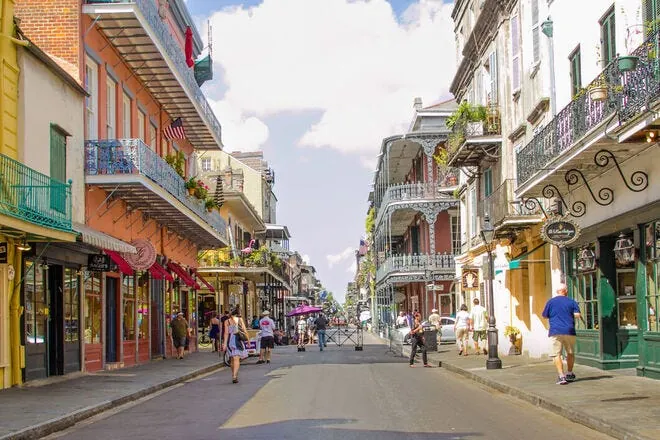
For those seeking a calmer and more refined version of Bourbon Street, Royal Street offers a stunning array of antique stores and art galleries. The historic and well-preserved architecture combined with street musicians playing jazz make it one of the more picturesque areas to stroll. This is the place to buy rare collectibles or simply window-shop as you soak in the atmosphere.
Visitor Tip: Spend at least half a day on Royal Street and don’t forget to stop at the many galleries showcasing local artists’ works.
9. Explore Magazine Street
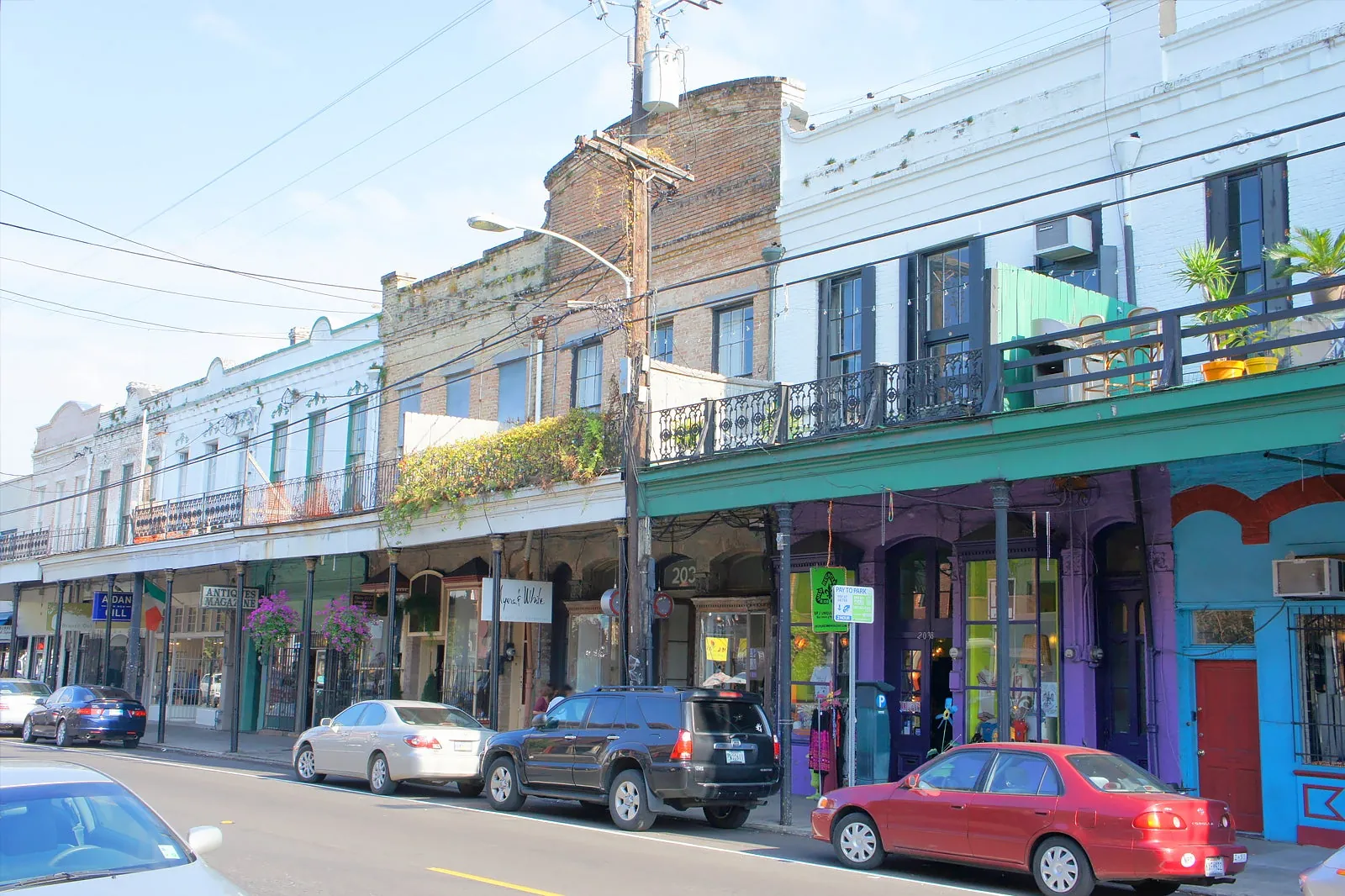
Magazine Street spans six miles through several New Orleans neighborhoods, offering a blend of boutique shops, quaint cafes, art galleries, and local businesses. Wander from one store to the next while discovering local crafts, curated home décor items, and custom clothing from local fashion brands. Magazine Street is also known for an eclectic variety of restaurants and eateries, making it a great spot to re-energize with food during a long day of exploration.
Visitor Tip: Take your time walking this extensive street, being sure to stop for a snack at one of its many locally beloved cafes and restaurants.
10. Visit Lafayette Cemetery No. 1
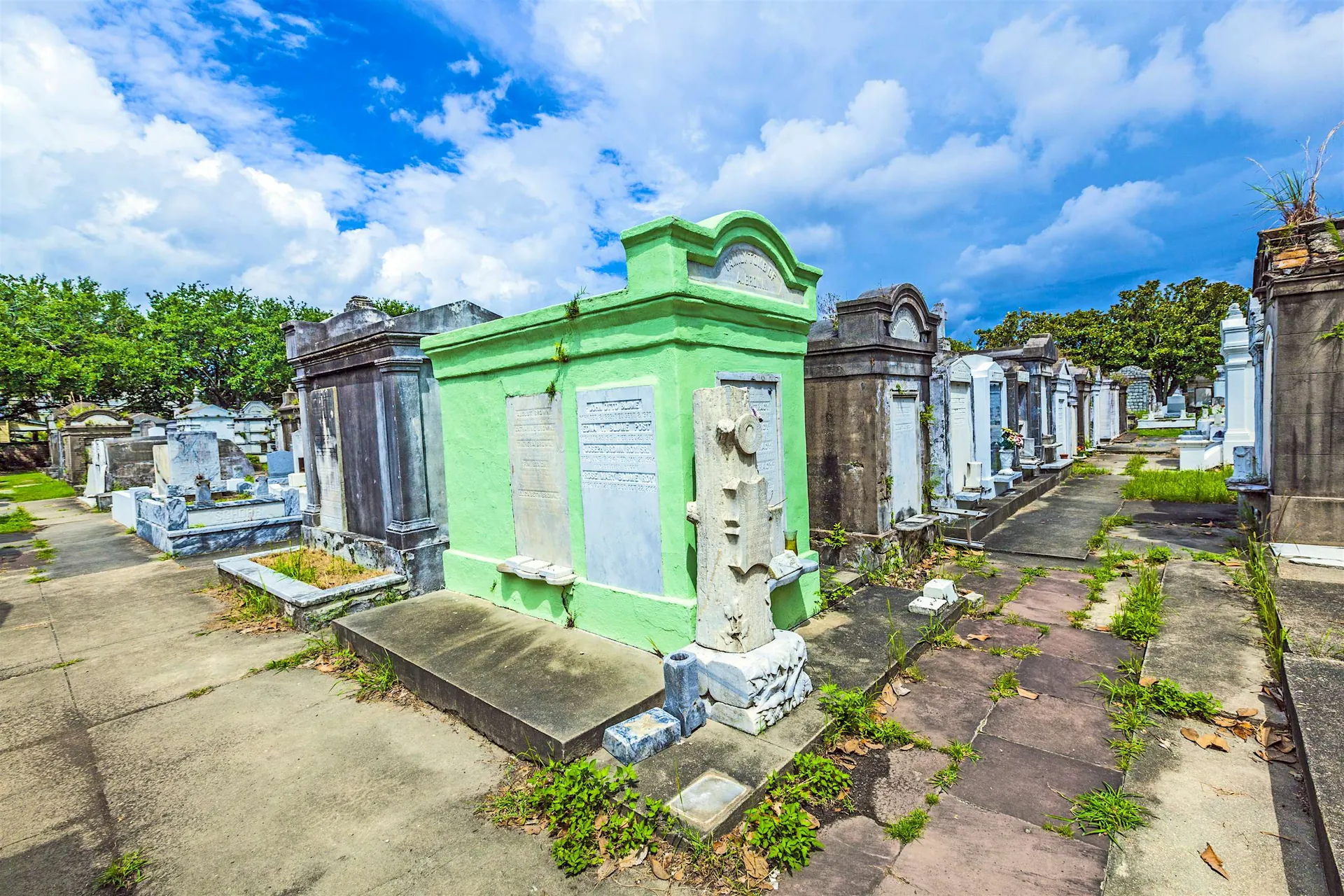
New Orleans is famous for its “Cities of the Dead”—cemeteries that boast elaborate, above-ground tombs due to the region’s high water table. Lafayette Cemetery No. 1 is one of the oldest and most popular of these, dating back to 1833. Its beautifully decayed structures provide a glimpse into New Orleans’ spiritual and cultural history. Tombs blend Greek Revival, Egyptian Revival, and Gothic architecture. Though the cemetery is currently closed for repairs, it remains one of the most prominent landmarks.
Visitor Tip: Keep an eye out for announcements regarding the cemetery’s reopening, but for the time being, guided cemetery tours often include discussion of the site even at a distance.
11. Tour Mardi Gras World
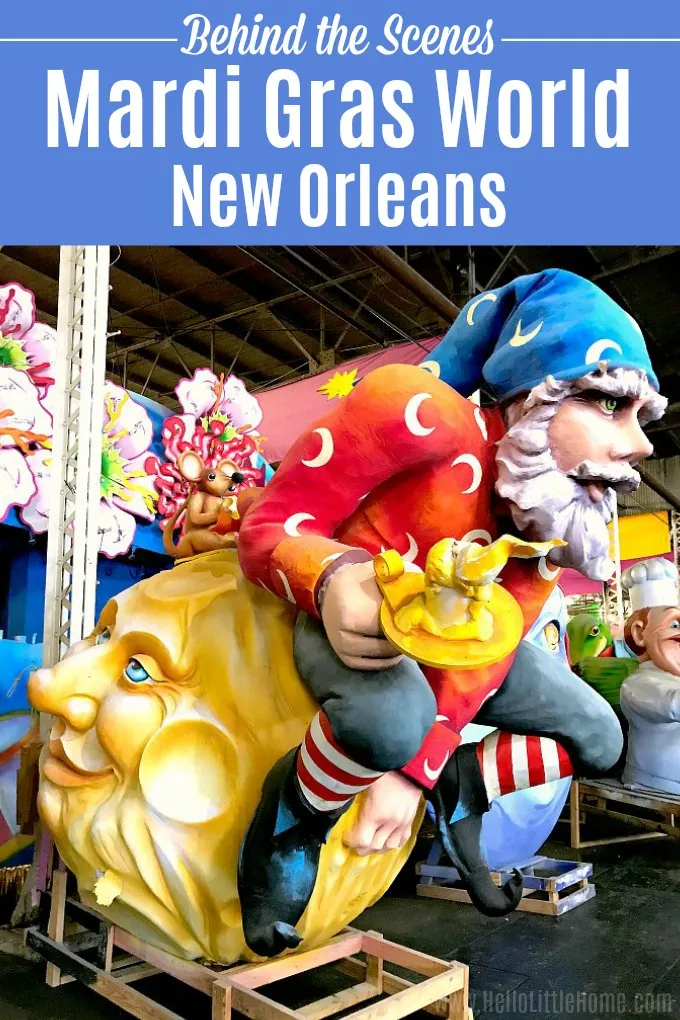
Experience Mardi Gras year-round by visiting Blaine Kern’s Mardi Gras World, where the famous ornate floats seen in parades are built and stored. The behind-the-scenes tour offers an interactive opportunity to learn about the history of Mardi Gras, admire oversized floats, and even try on costumes used during the parades. It’s perfect for families seeking an engaging and educational exploration of New Orleans’ most iconic celebration.
Visitor Tip: The tour can include a free shuttle from multiple points around the city, including the French Quarter. Be sure to try the complimentary slice of King Cake, which is provided year-round during the tour.
12. Wander Through Louis Armstrong Park & Congo Square
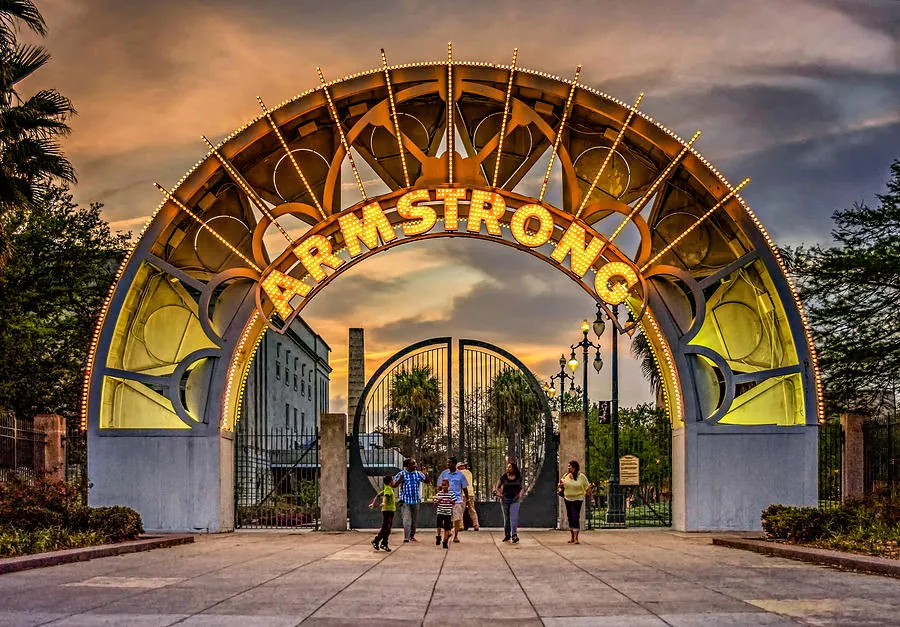
Louis Armstrong Park, located just outside the French Quarter, honors the musical legend Louis Armstrong and New Orleans’ jazz heritage. The park is also home to Congo Square, a vital piece of the city’s African American history. During the 19th century, enslaved Africans would gather in Congo Square on Sundays—one of the only times they were granted to rest. They would engage in singing, playing music, and dancing, and many music historians trace the roots of jazz back to these gatherings.
Visitor Tip: Plan to come on a Sunday afternoon when local musicians often gather in Congo Square to play live music, continuing the tradition that began centuries ago.
13. Explore the Historic French Market
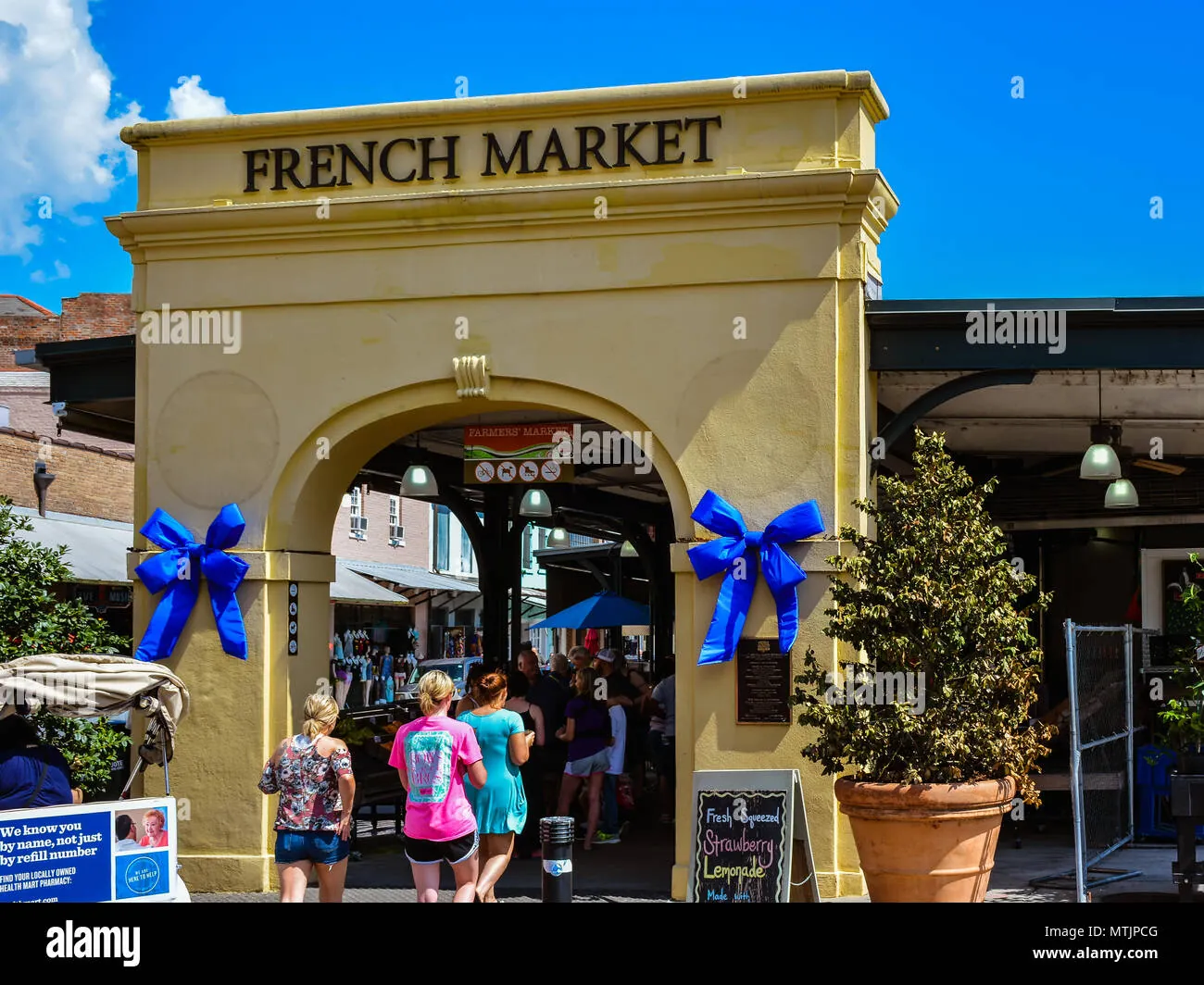
Spanning six blocks in the French Quarter, the French Market is one of the oldest open-air markets in the U.S. Here you find shopping for everything from quirky souvenirs and handcrafted local goods to mouthwatering local foods. The market offers an eclectic selection of artisan products, such as handmade jewelry, local artwork, and, of course, the famous beignets. Spend an afternoon here browsing the stalls and sampling New Orleans-style cuisine from local vendors.
Visitor Tip: Start your journey with a cafe au lait from one of the nearby cafes to fuel up for shopping.
14. Visit Jean Lafitte National Historical Park & Preserve
Just outside the French Quarter lies the Jean Lafitte National Historical Park and Preserve, where visitors can take in scenic Louisiana swamps and historical parks. Barataria Preserve, in particular, offers wooden boardwalks that wind through dense cypress trees and waterways teeming with wildlife. It’s also a prime opportunity to learn about pirate Jean Lafitte’s exploits in the region.
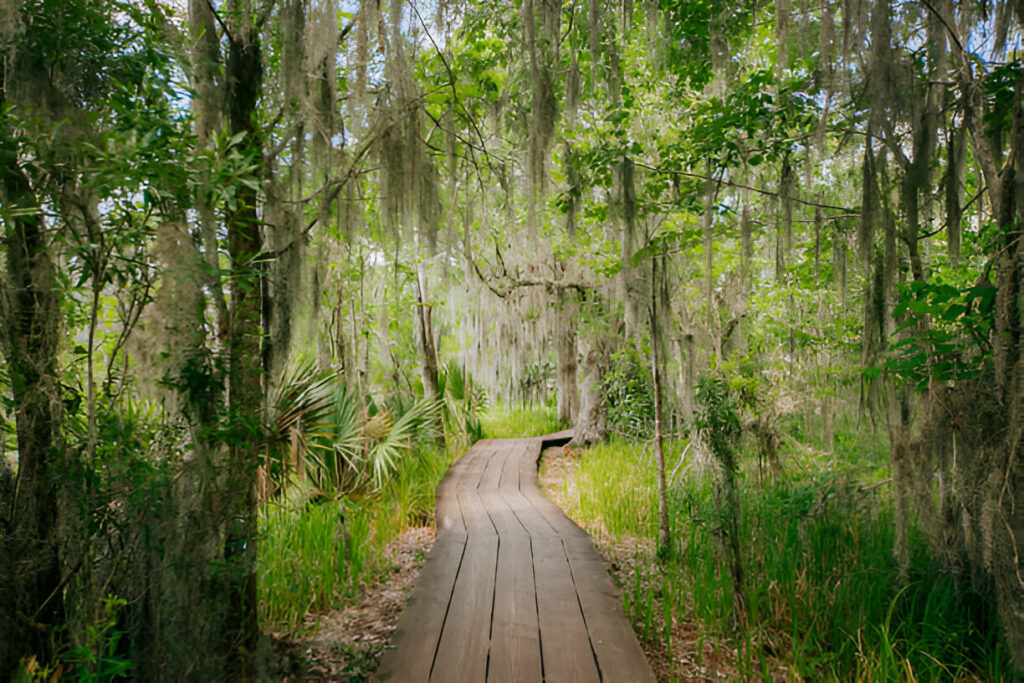
Visitor Tip: For wildlife enthusiasts, take time to walk through the nature preserves, and keep your eyes peeled for alligators sunning themselves along the trails.
15. Take a Free Walking Tour in New Orleans
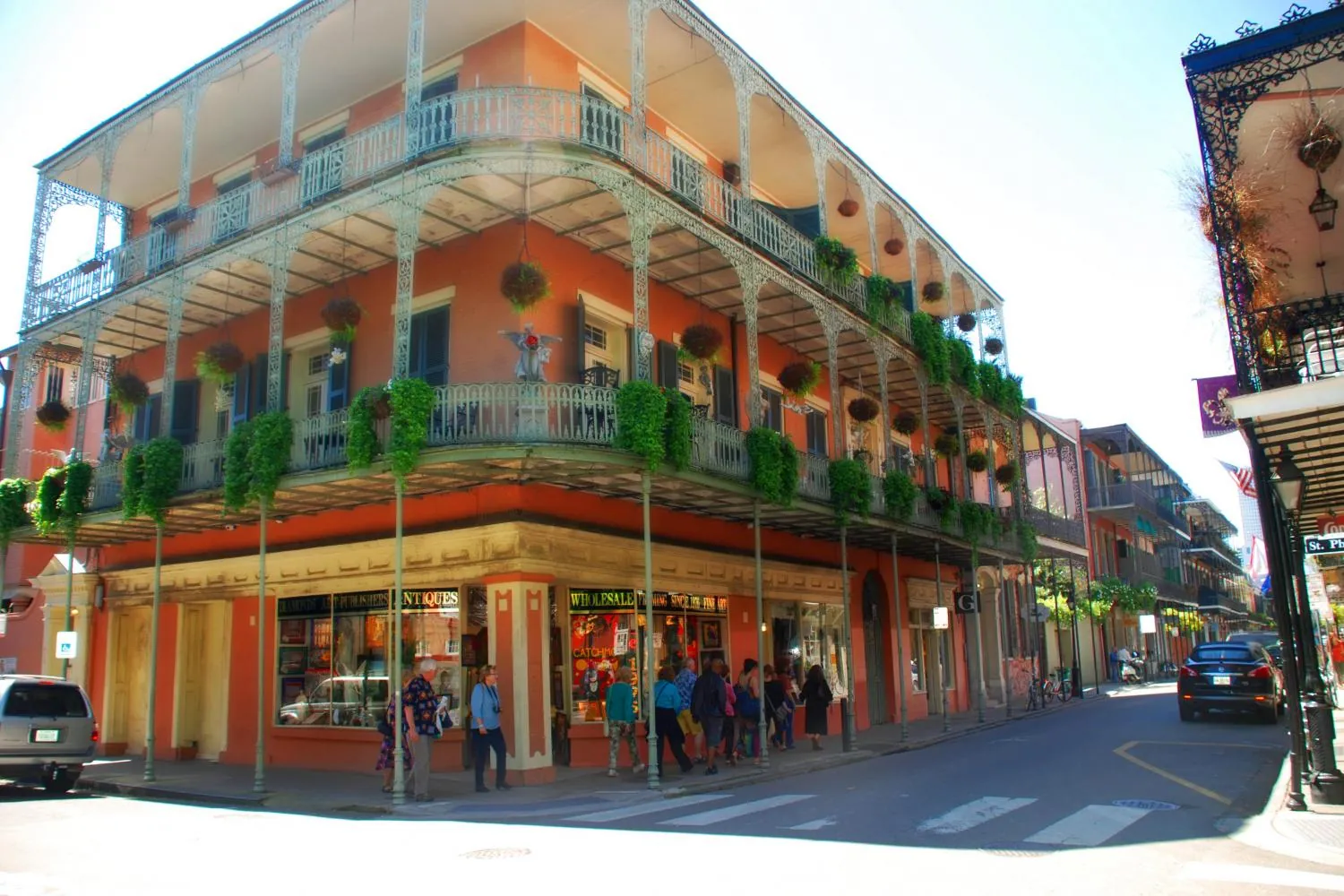
For budget-conscious travelers, New Orleans offers a variety of free walking tours, many covering the city’s history, architecture, and ghost stories. From strolling the French Quarter while learning about its French and Spanish colonial past to delving into the eerie tales behind the city’s haunted homes and cemeteries, there is no shortage of options. You can explore neighborhoods such as the Garden District or take thematic tours focusing on New Orleans’ role in the civil rights movements.
Visitor Tip: Be sure to tip your guide at the end of the tour as these tours operate on a gratuity model.
16. Visit the Ogden Museum of Southern Art
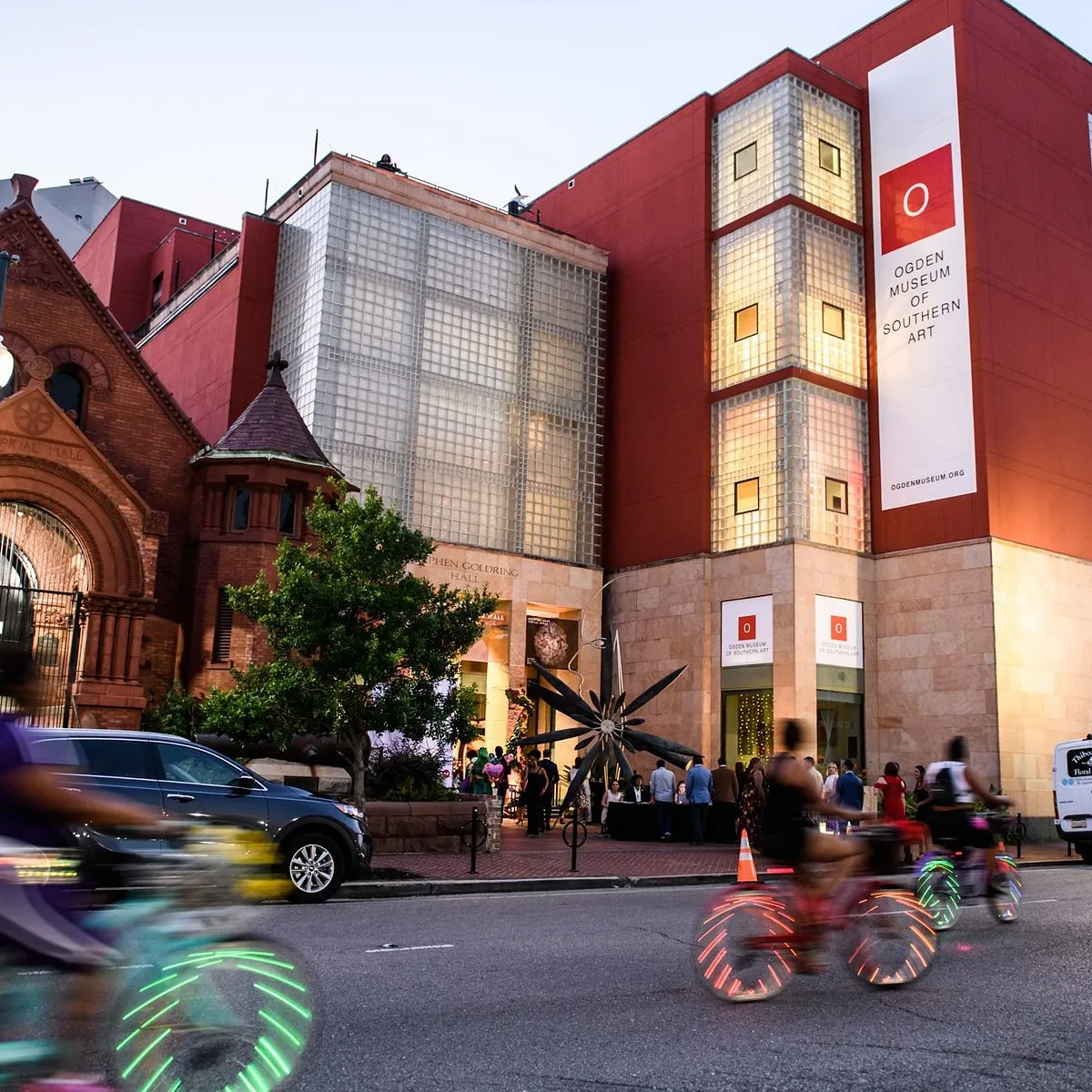
For those interested in the art and culture of the American South, the Ogden Museum of Southern Art is a must-visit. Covering a myriad of mediums, including paintings, photography, and sculpture, the museum housing one of the largest collections of Southern art in the world. Through a diverse range of rotating exhibits, the museum works to showcase the creativity of Southern artists both past and present.
Visitor Tip: Every Thursday night, the museum offers live music as part of an after-hours event known as “Ogden After Hours,” which features performances by regional musical artists.
17. Discover the Historic New Orleans Collection
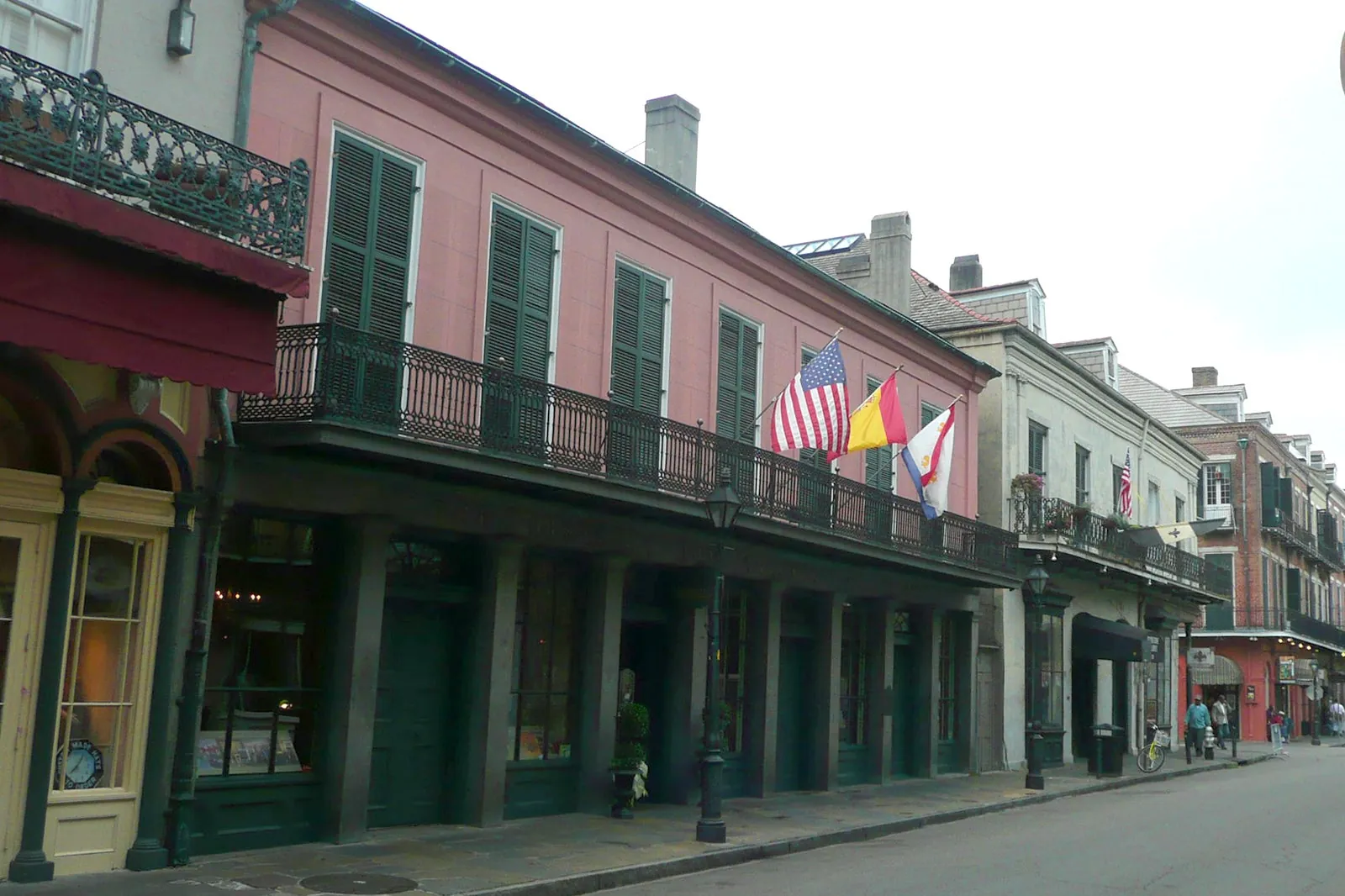
The Historic New Orleans Collection (THNOC) is a museum and research center dedicated to preserving the city’s history. Located in the French Quarter, its vast collections feature various documents and artifacts detailing Creole culture, the early colonial settlement of the city, and New Orleans’ role in major historical events such as the Louisiana Purchase and the War of 1812.
Visitor Tip: Admission to the museum is free, and it’s an excellent stop if you’re already touring the French Quarter.
18. Attend a Festival or Event in New Orleans
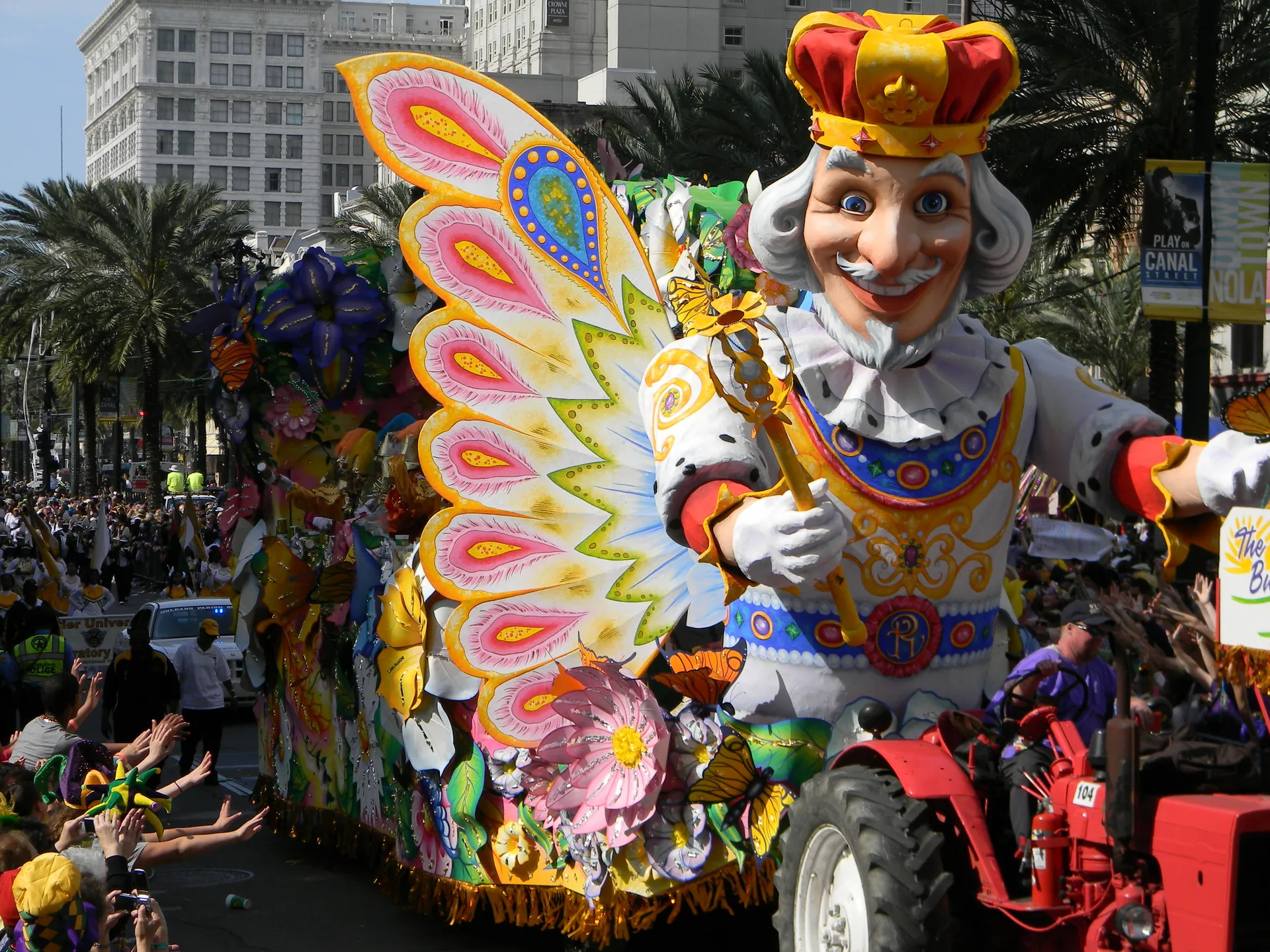
New Orleans is known for its festivals, and with events taking place year-round, it’s worth planning your trip around one of the city’s famous celebrations. Perhaps the most renowned is the Mardi Gras Festival that takes over the city every February. However, there are numerous other events held throughout the year, such as the French Quarter Festival, Essence Festival, the Beignet Festival, and Jazz Fest. Each event showcases different aspects of the city’s culture, from its jazz roots to its gastronomic creativity.
Visitor Tip: Book accommodations early if you’re planning to visit during a major festival, as the city fills up fast.
19. Walk Along Woldenberg Riverfront Park

For a combination of panoramic views and peaceful walking paths, visit the Woldenberg Riverfront Park along the edge of the Mississippi River. Stretching between the French Quarter and the Central Business District, this park offers paved paths suitable for bike riding and sitting areas to relax beside the water. It’s perfect for catching riverfront breezes, observing ships passing, or taking in public art installations.
Visitor Tip: Ideal for a post-lunch walk, grab a bite in the French Quarter before winding down the paths along the Mississippi.
20. Visit Algiers Point for Stunning Views
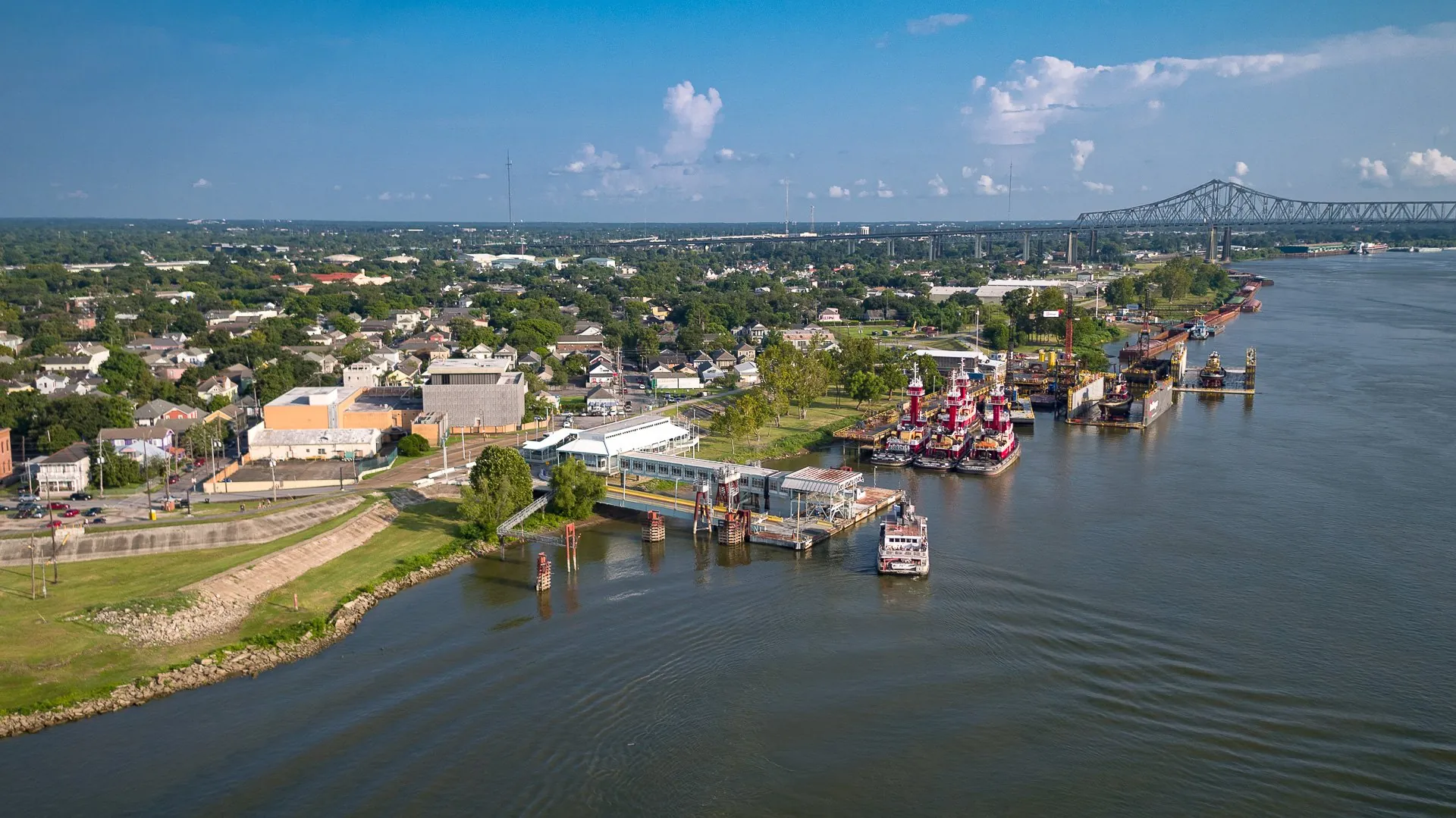
A quick and budget-friendly ferry ride from the Central Business District carries you to Algiers Point, a charming neighborhood that offers unobstructed views of the New Orleans skyline. Take a moment to explore this quiet, largely residential area, and enjoy the scenic lookouts along the river. With its historic Creole cottages and slow pace of life, Algiers Point feels removed from the rush of the city—but you’re still just minutes away from the French Quarter.
Visitor Tip: Take the ferry either at sunrise or sunset for the best views of the New Orleans skyline reflecting in the Mississippi River.
21. Explore the Lower Ninth Ward Living Museum

The Lower Ninth Ward’s significance notably came into focus in the aftermath of Hurricane Katrina. Today, the Lower Ninth Ward Living Museum stands as an educational and memorial space aiming to document the area’s history, as well as the impact of Hurricane Katrina on its residents. Through exhibits featuring oral histories, photographs, and testimonials, the museum tells both the past and ongoing story of this significant neighborhood’s struggle and resilience.
Visitor Tip: The museum is free to the public, though donations are appreciated to help support its ongoing mission.
22. Visit Blaine Kern’s Mardi Gras World
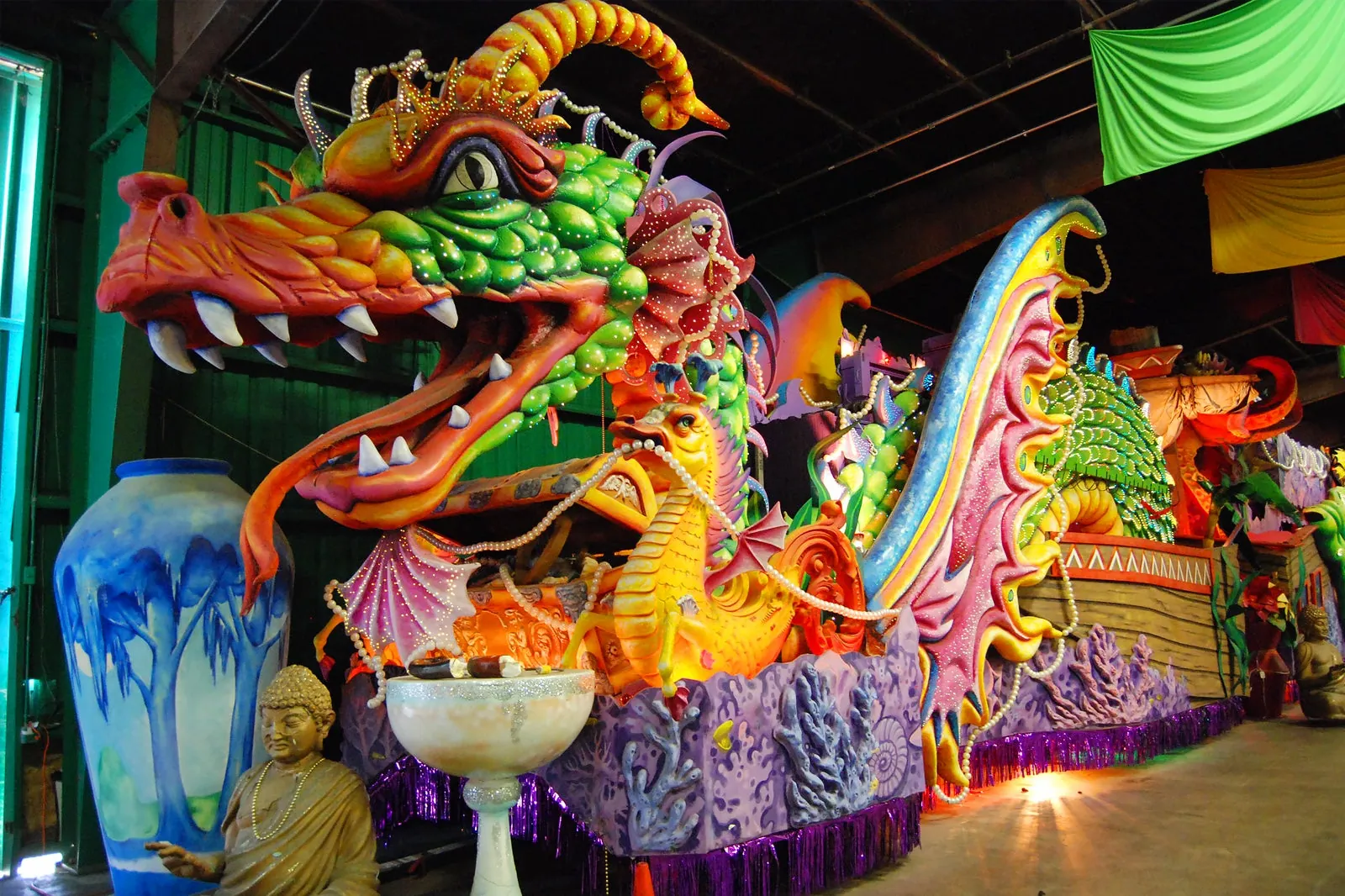
Another great behind-the-scenes Mardi Gras activity, Mardi Gras World allows visitors to witness the artistry and creativity that go into creating the iconic floats. At this working warehouse, you will see in-progress floats, massive sculptures, and the vibrant colors and characters that help bring Mardi Gras to life.
Visitor Tip: Complimentary shuttle services make getting to this out-of-the-way destination hassle-free, and the tour includes a slice of King Cake, which is a key tradition no matter what time of year.
23. Take a Scenic Bike Ride on Lafitte Greenway
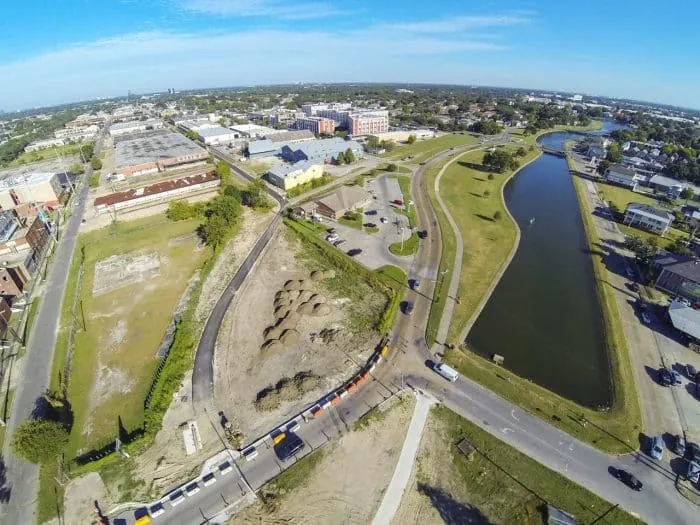
Connecting many of New Orleans’ neighborhoods is the Lafitte Greenway, a 2.6-mile biking and walking trail that stretches from the French Quarter to Mid-City. Converted from an old railway line, the greenway has become one of the city’s best urban trails, providing locals and tourists with scenic and convenient paths to explore on foot or by bike. Along the route, you’ll pass parks, art installations, cafés, and a blend of residential and commercial areas.
Visitor Tip: Bring a camera to capture photos of the colorful murals and urban installations that adorn the greenway.
FAQs Section
- What is New Orleans best known for? New Orleans is globally recognized for its diverse culture, rich history, and vibrant festivals. Among the city’s most well-known attributes are its distinctive Creole and French-inspired architecture, its contributions to American jazz, and its world-class cuisine, including dishes like gumbo, jambalaya, and beignets. Events such as Mardi Gras and the Jazz Fest also cement New Orleans’ status as a cultural hub. Additionally, the city bears a melancholic beauty with its above-ground cemeteries and haunting yet beautiful bayous.
- What should you not miss in New Orleans? Must-see destinations in New Orleans include the French Quarter, where Jackson Square and St. Louis Cathedral are iconic landmarks, as well as Mardi Gras World, where you learn behind-the-scenes details about the city’s most famous festival. Nature lovers should head to City Park or take a scenic riverboat cruise on the Mississippi while history enthusiasts must visit the National WWII Museum and Lafayette Cemetery No 1. Don’t miss the opportunity to explore the Garden District filled with charming streets, historic mansions, and fascinating burial grounds.
- Is it safe to walk around New Orleans? Generally, it is safe to walk around popular tourist areas such as the French Quarter, Garden District, and along Magazine Street during the day. Like many cities, visitors should exercise caution after dark, particularly if venturing into less populated areas. It’s also recommended to use ride-sharing services or travel in groups if you’re exploring at night. Key advice includes sticking to well-populated areas, being mindful of your belongings, and looking out for pickpockets, particularly during festivals or large gatherings.
- What are some family-friendly things to do in New Orleans? New Orleans is surprisingly family-friendly. The Audubon Zoo and Aquarium, located in the lush Audubon Park, are top attractions for kids. City Park provides a day of outdoor activities including Storyland, a fairy-tale-themed playground. The National WWII Museum offers an interesting and educational experience for older children, while swamp tours are an adventurous way to learn about Louisiana’s ecosystems. Interactive outings like Mardi Gras World let children see enormous parade floats up close and participate in hands-on fun!
- What unique about New Orleans culture? New Orleans’ distinctive culture stems from a confluence of diverse influences, chiefly French, Spanish, Creole, and African. This is visible not only in its architecture, language, and street names but also through iconic cultural forms such as jazz music, the Creole language, and a unique food scene drenched in rich flavors. The city also stands apart for its vibrant festivals that celebrate these cultural influences, such as Mardi Gras, where music, costumes, and food come together in a fantastic display of the city’s unique soul.
Conclusion
New Orleans is a city that offers an unparalleled combination of history, music, culture, and outdoor beauty. From wandering through centuries-old neighborhoods to enjoying jazz at every corner, indulging in world-class Creole cuisine, or getting lost in the tranquil bayous, the Big Easy offers something for everyone. Beyond its celebrated nightlife and music, its broader story is told through its fascinating museums, historic cemeteries, nature preserves, and the ever-present echoes of its unique and resilient soul. Whether you’re visiting for Mardi Gras or simply seeking a rich and varied cultural experience, New Orleans is sure to capture your heart, leave you spellbound, and have you yearning to return.






